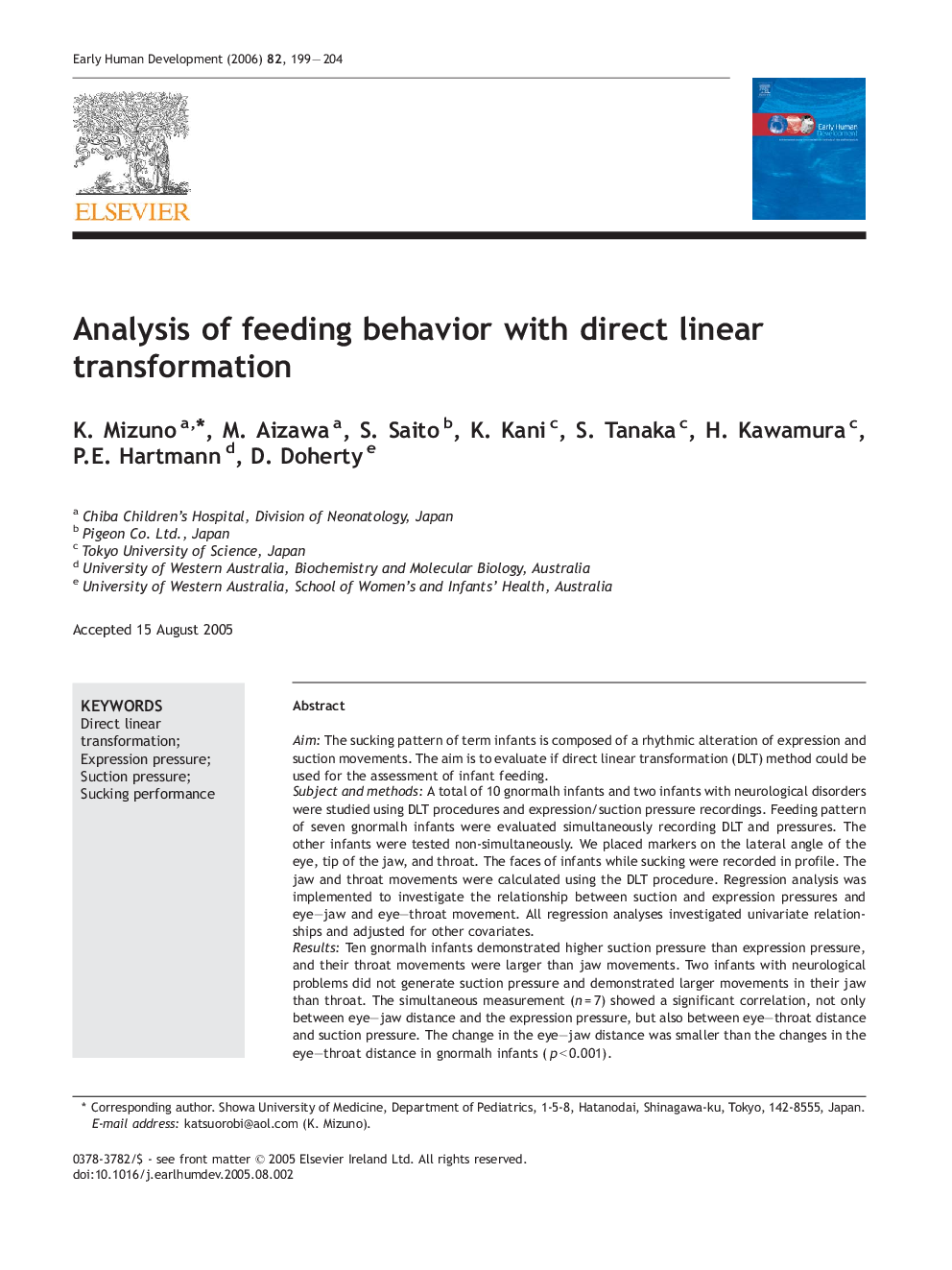| Article ID | Journal | Published Year | Pages | File Type |
|---|---|---|---|---|
| 3918418 | Early Human Development | 2006 | 6 Pages |
AimThe sucking pattern of term infants is composed of a rhythmic alteration of expression and suction movements. The aim is to evaluate if direct linear transformation (DLT) method could be used for the assessment of infant feeding.Subject and methodsA total of 10 gnormalh infants and two infants with neurological disorders were studied using DLT procedures and expression/suction pressure recordings. Feeding pattern of seven gnormalh infants were evaluated simultaneously recording DLT and pressures. The other infants were tested non-simultaneously. We placed markers on the lateral angle of the eye, tip of the jaw, and throat. The faces of infants while sucking were recorded in profile. The jaw and throat movements were calculated using the DLT procedure. Regression analysis was implemented to investigate the relationship between suction and expression pressures and eye–jaw and eye–throat movement. All regression analyses investigated univariate relationships and adjusted for other covariates.ResultsTen gnormalh infants demonstrated higher suction pressure than expression pressure, and their throat movements were larger than jaw movements. Two infants with neurological problems did not generate suction pressure and demonstrated larger movements in their jaw than throat. The simultaneous measurement (n = 7) showed a significant correlation, not only between eye–jaw distance and the expression pressure, but also between eye–throat distance and suction pressure. The change in the eye–jaw distance was smaller than the changes in the eye–throat distance in gnormalh infants (p < 0.001).ConclusionsThe DLT method can be used to evaluate feeding performance without any special device.
